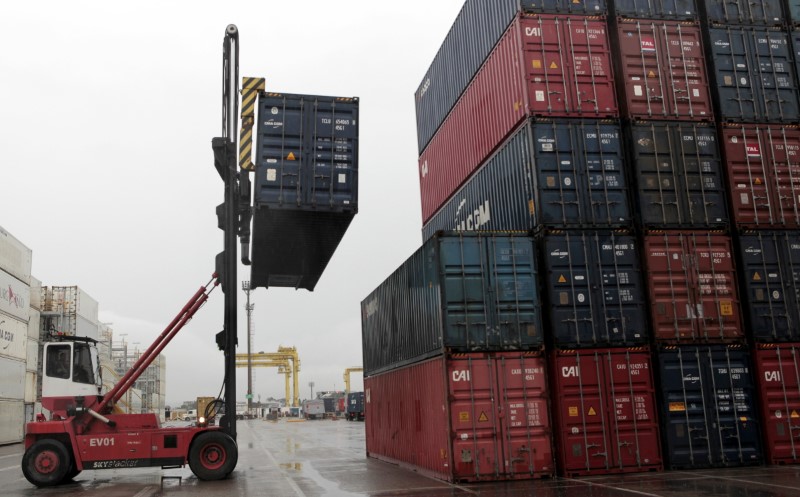By Silvio Cascione
BRASILIA (Reuters) - A record soy crop and rising automobile exports probably pulled Brazil out of its deepest recession on record in the first quarter, a Reuters poll showed on Tuesday, suggesting a slow recovery gained pace before an escalating political crisis threatened to bring down the government.
Brazil's gross domestic product probably expanded by 1.0 percent in the first quarter from the last three months of 2016, after seasonal adjustments, according to the median forecast of 20 economists surveyed by Reuters.
Brazil's economy has contracted in the past eight quarters. The country's deepest and longest downturn since records began in 1901 helped topple former President Dilma Rousseff, who was impeached for breaking budget rules.
The economic crisis has also caused massive unemployment as GDP shrank by more than 3 percent in each of the past two years.
The numbers due out on Thursday at 9 a.m. (1200 GMT) will be a likely boost to President Michel Temer as he faces a Supreme Court investigation for corruption and obstruction of justice.
Temer, who took office a year ago, has sought to implement a broad agenda of economic reforms but faces growing calls for his resignation.
First-quarter growth was probably driven up by bumper harvests of corn and soy. UBS economists estimate agricultural output rose 7.9 percent on a quarterly basis, outpacing other sectors of the economy by a large margin.
Meanwhile, automobile exports climbed to a record in the first quarter, driving automobile production up 24 percent.
Finance Minister Henrique Meirelles on Monday told reporters the economy likely grew by around 0.7 percent in the first quarter versus the previous one.
Central bank data earlier this month showed economic activity grew 1.1 percent in the first quarter from the last three months of 2016.
The Finance Ministry expects a dip in the second quarter before growth picks up momentum in the second half of the year, as an aggressive series of interest rate cuts by the central bank starts to bolster demand.
Gross domestic product probably slipped by 0.5 percent on an annual basis, up from a decline of 2.9 percent in the fourth quarter of 2016, according to the poll.

Estimates for the quarterly rate of growth ranged from 0.5 percent to 1.5 percent, while estimates for the annual rate varied between an increase of 0.4 percent and a decline of 1.8 percent.